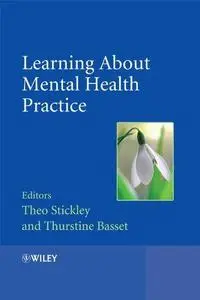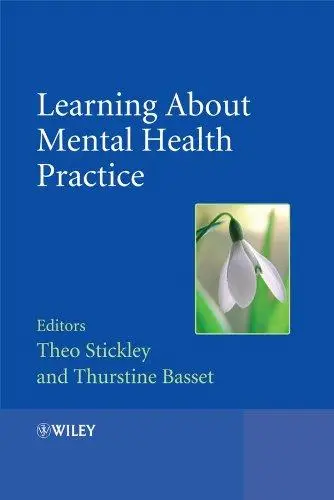Learning about Mental Health Practice By
2008 | 615 Pages | ISBN: 0470512261 | PDF | 6 MB
2008 | 615 Pages | ISBN: 0470512261 | PDF | 6 MB
This textbook outlines the key areas of mental health practice for those in the early stages of their training, who may not necessarily come from psychology backgrounds. Accompanies the lecturer’s book ‘Teaching Mental Health’ Focuses on the 'Ten Essential Shared Capabilities' that have been developed by the Sainsbury Centre for Mental Health In partnership with the BABCP, Lord Layard is recommending that more mental health graduates be trained in order to meet demand for mental health services in the UK Content: Chapter 1 The Ten Essential Shared Capabilities: Their Background, Development and Implementation (pages 7–21): Roslyn HopeChapter 2 The Ten Essential Shared Capabilities in Practice (pages 23–38): Ian McGonagle, Ian Baguley, Sara Owen and Sarah LewisChapter 3 Working in Partnership (pages 39–52): Anne Beales and Gary PlatzChapter 4 Respecting Diversity Through Acknowledging, Valuing and Using Diversity and Challenging Inequalities (AVUDCI) (pages 53–78): Premila TrivediChapter 5 Practising Ethically: Values?Based Practice and Ethics – Working Together to Support Person?Centred and Multidisciplinary Mental Health Care (pages 79–103): Bill (KWM) Fulford and Kim WoodbridgeChapter 6 Challenging Inequality (pages 105–118): David PilgrimChapter 7 Promoting Recovery (pages 119–139): Daniel B. FisherChapter 8 Identifying People's Needs and Strengths (pages 141–155): Lesley WarnerChapter 9 Providing Service User Centred Care (pages 157–172): Laura LeaChapter 10 Making a Difference (pages 173–193): Norman Young, Madeline O'Carroll and Lorraine RaynerChapter 11 Positive Risk Taking: A Framework for Practice (pages 195–212): Anne Felton and Gemma StaceyChapter 12 Personal Development and Learning (pages 213–232): Sharon Lee Cuthbert and Thurstine BassetChapter 13 Social Perspectives on Mental Distress (pages 233–252): Jerry TewChapter 14 Socially Inclusive Practice (pages 253–269): Peter Bates and Joanne SeddonChapter 15 Equality and Rights: Overcoming Social Exclusion and Discrimination (pages 271–290): Liz SayceChapter 16 Service User Involvement (pages 291–309): Peter CampbellChapter 17 Connecting the Parts to the Whole: Achieving Effective Teamwork in Complex Systems (pages 311–328): Steve OnyettChapter 18 Problems Associated with the Use of the Concept ‘Mental Illness’ (pages 329–345): Anne CookeChapter 19 Drugs, Alcohol and Mental Health (pages 347–380): Tabitha Lewis and Alison CameronChapter 20 Gender Inequality and the Mental Health of Women and Men (pages 381–400): Jennie Williams and Joe MillerChapter 21 The Trauma Model of Psychosis (pages 401–416): Paul Hammersley, Peter Bullimore, Magdalen Fiddler and John ReadChapter 22 Carers' Experiences of Mental Health Services and Views about Assessments: Lessons from the Partnership in Carer Assessments Project (PICAP) (pages 417–437): Julie Repper, Gordon Grant, Mike Nolan and Pam EnderbyChapter 23 Therapeutic Relationships (pages 439–461): Theo Stickley and Dawn FreshwaterChapter 24 Psychological Approaches to Mental Health (pages 463–478): Rufus May, Anne Cooke and Anthony CottonChapter 25 Employment: What You Should Know and What You Should Do (pages 479–494): Bob GroveChapter 26 Treating Creatively: The Challenge of Treating the Creative Mind (pages 495–510): Peter AmselChapter 27 Social Inclusion and Psychosocial Interventions: Clash, Compromise or Coherence? (pages 511–529): Peter Bates and Julie CullenChapter 28 Spirituality and Mental Health (pages 531–553): Peter GilbertChapter 29 Holistic Approaches in Mental Health (pages 555–570): Jan WallcraftChapter 30 The Capable Practitioner of the Future (pages 571–574): Theo Stickley and Thurstine Basset



